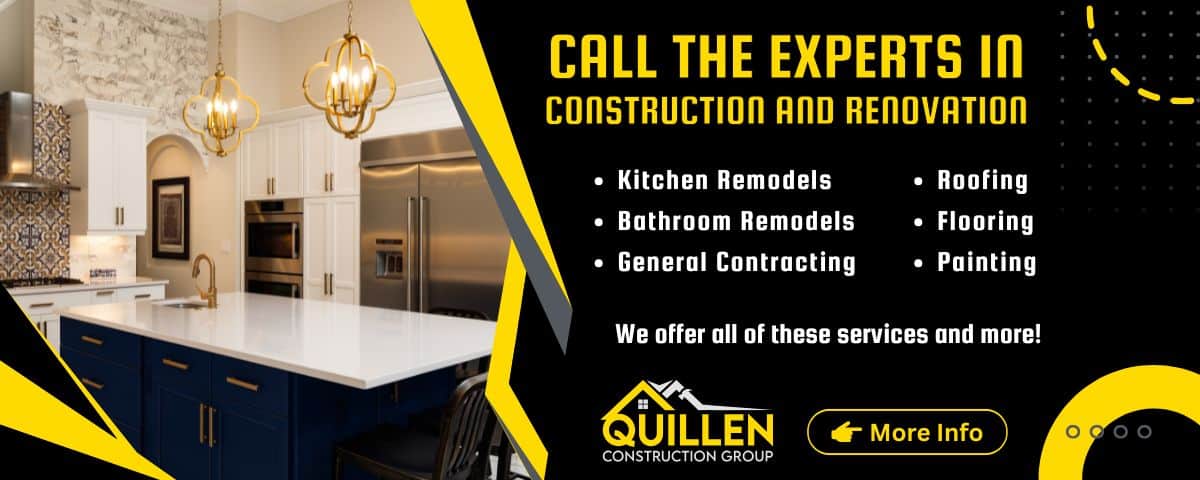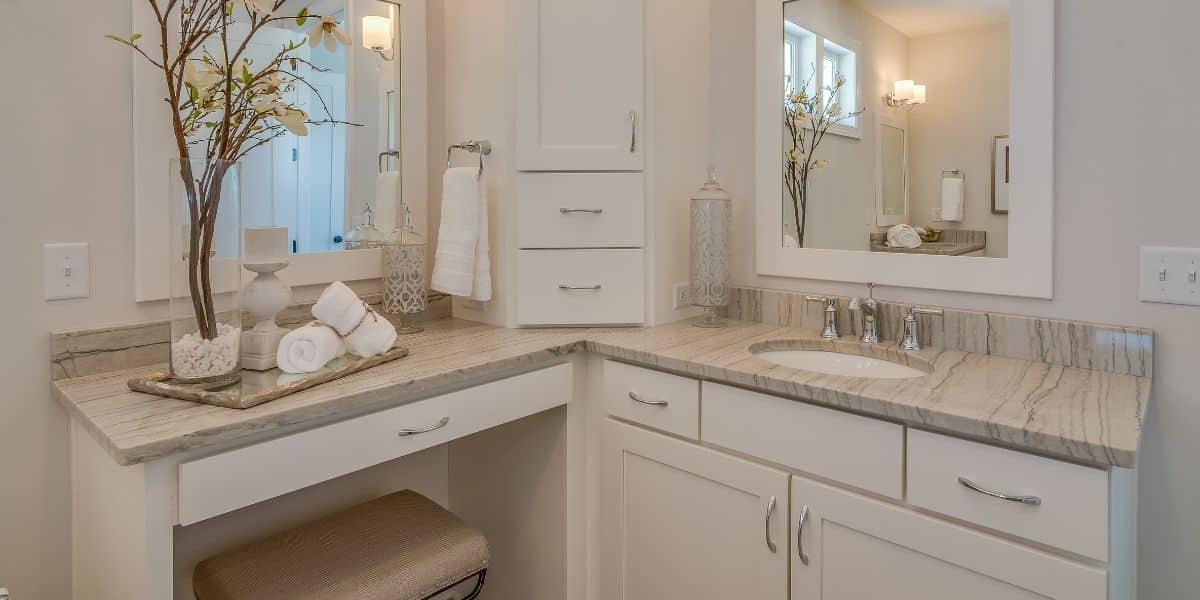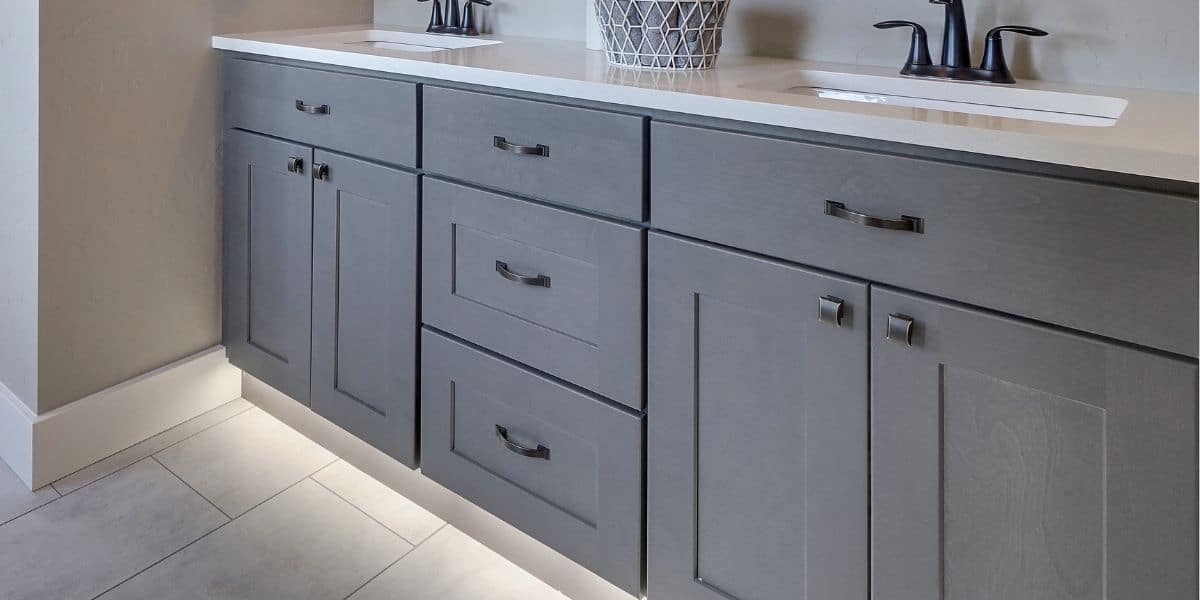Choose a vanity that suits your style and space, whether it’s simple and relaxed or elegant and sophisticated. Our eight-step guide to buying a bathroom vanity will take you through all the details, from size and color to premium options and more. So before you start your bathroom remodel, read on.
1. Choose a size
Rule number 1 for any project is measure. (Spoiler Alert: Rule #2 is…measure it again!) Don’t forget to include the door clearance when calculating your space. This includes your shower. You want to make sure that drawers and cabinets can be opened without hitting doors, mirrors or other cabinets.
Think about the ideal countertop and bathroom storage scenario. The bathroom will be used by guests, or as a space to get ready. You can either display your toiletries for easy access or hide them. You’ll know the size of your bathroom vanity once you have all these details.
You can find all three dimensions in the product specifications.
Small Vanities (18 to 36 inches)
This size bathroom vanity are perfect for small spaces and powder rooms. They can fit a surprising amount into a compact area. These small workhorses come in three common sizes: 24 inch 30 inch and 36 inch.
Medium Vanities (30-60 inches)
This is the perfect vanity for a child’s bathroom, guest room, or a mid-sized suite. This range has a wide variety of options (most commonly, you’ll find 42 inch, 48 inch and 60 inches), and includes both single and dual sinks. Next step will cover that!
Large Vanities (60+ Inches)
You can go big in the primary bathroom or guest bathrooms where you have plenty of space to work with. We’re talking 60 inches, 72 inches, 80 inches, and even larger. You’ll have plenty of room for your bathroom essentials both above and below.

2. Single vs. double
You can double up on sinks if you share a bathroom and have the space. Think primary suite or jack and jill bathrooms. Think about the personal space you will gain by sacrificing a little counter space.
One sink is usually enough for powder rooms or small spaces. If you’re working with a small space, two single vanities may be the best option.
3. Select your color
Everyone knows that color choices reflect your personality and mood. Consider how the color will fit into your bathroom’s overall design and what mood you want it to convey.
It’s not hard to understand why white is the most popular bathroom vanity color. It is versatile, clean and classic. White goes with any style. If you want something different, then blue, gray, green or brown can be great choices. Brown can be used to create a warm, inviting bathroom while blue is great for creating a relaxing oasis. Green or gray are stunning choices if you want to make an impact.
4. Select your type
Freestanding or floating? The most common vanities are freestanding vanities that sit on the floor and have a solid base. Some also come with built-in legs. The floating vanities (also known as “wall mounted”) are attached directly to the wall and hover above the floor. This mounting gives the illusion of space in smaller bathrooms.
Corner vanities are also a great way to make the most of small spaces. Just ensure that adjacent walls meet at an exact 90-degree angle.
Choose a vanity that has a top to avoid having to buy (and assemble) an additional counter.
5. Choose your style
The majority of bathroom renovations involve a style upgrade (see you, pink formica!) You’re not sure what direction to take? You can choose from a variety of popular options.
Contemporary
Contemporary design is always evolving. This style is characterized by neutral colors, rounded corners, and thoughtful, yet minimal design elements.
Modern
Modern design has clean lines, monochromatic colors and is minimalistic. It’s similar to contemporary but different in its own right. A modern vanity is the perfect choice if you want to create a serene and sleek environment.
Transitional
Transitional vanities are extremely versatile and combine both traditional and modern styles for a timeless look. Combining a classic shape in a calming color with modern hardware will give your bathroom an uplifting vibe.
Farmhouse
The farmhouse vanity is cozy, rustic, natural and unfussy. The farmhouse vanity’s throwback to simpler days is reflected in its distressed wood finishes and hand-hewn details. It also features large apron basins. This results in a warm and welcoming space that feels like home.
Midcentury
Midcentury vanities are a result of 20th century modernism. They favor simple, functional forms. Retro style is not afraid of color. The palettes range from muted tones up to vibrant shades. To achieve the iconic look, it also incorporates synthetic materials with natural elements such as wood, stone, and glass.

6. Go premium
Here’s our list of top-to-bottom, inside and outside, favorite upgrades.
Base material
Wood has become the most popular base material. However, not all woods are created equal. Solid wood vanities are available in a variety of styles, including oak and walnut. The strength and beauty of this wood make it an excellent choice for a long-lasting product.
MDF is an affordable alternative, made from wood composites and fibers for durability.
Dovetail drawers
Dovetail drawers are built for strength and use interlocking joints at each corner to fuse together the sides. Its puzzle-like appearance tells you that it is a drawer of high quality, which can withstand heavy use day after day and year after year.
Soft-close
Soft-close drawers and doors are designed to stop at the end of their roll. This technology not only protects the vanity (and prevents your fingers from being pinched), but it is also whisper-quiet so you can still use your vanity even in the early hours.
Concealed hinges
Hardware can enhance a vanity, but it can also be hidden. Hidden hinges are invisible once you close the cabinet doors, giving the appearance of a sleek design. These hinges are also quiet, self-closing and adjustable. They are the gold standard of hinge hardware.
Built-in legs
If you want a vanity that stands alone and looks like furniture, choose legs built in. Legs can be straight and simple, or carved with curves. They add a finishing touch to the vanity and provide a sturdy base. Some have an open shelf on the bottom to hold rolled towels or handwoven baskets.
Paint finish
The paint finish can tell you the amount of light that it reflects. As bathrooms are usually humid, satin will be the most matte finish. Semi-gloss has a shinier finish than satin and gloss is the most reflective. All three are bathroom-approved, so it really comes down to personal preference…although, if you’re asking us, glossier finishes are easier to clean.
Countertop Material
There are many factors to consider when choosing countertops for your bathroom. Natural stone, such as granite and marble is incredibly hard and each piece is unique. What’s the downside? The majority of natural stone is porous, so it requires a sealant as well as a bit more TLC.
Pro tip: some natural stone counters have been professionally sealed in the factory. Check with the manufacturer prior to purchasing.
Quartz, is an engineered stone that’s primarily quartz with some other materials added. Quartz is not only 100% natural, but it’s also resistant to bacteria, moisture and stains.
Also, keep in mind the thickness of your counter. The thickness of the counter (generally greater than 1 3/4″) will not only increase durability but also enhance your vanity’s appearance.
Backsplash
Some vanities also come with a backsplash, which is usually made of the same material as the countertop. A backsplash’s main purpose is to protect your wall from damage caused by water, but also completes its look. You can add one if your vanity does not come with it.

7. What’s included?
Some photos of vanity cabinets show a completed look. However, not all items are included in the package. Sinks are often included in the package (but not always!) Mirrors and faucets can be purchased separately to allow you to express your personal style.
Check if the countertop is pre-drilled for one or three holes before you purchase a faucet.
Check out the checklist below to see what you are getting and what you need to spend more on.
- Sink
- Mirrors
- Faucet
- Backsplash
- Lighting
- Pop-up drain
- P-Trap
8. Complete the look
Accessorizing your vanity is the next step. Keep your style consistent (or complementary) for a catalog-worthy look.
Your faucet can have a huge impact on your overall design. There are many different finishes and designs (polished nickel, matte black, brushed brass). Make sure that it does not compete with cabinet pulls and other visible hardware.
If you have a double sink, you’ll need to decide whether you want two small mirrors or one large one. While you’re at the store, some soft, glowing lighting may be nice. Want to add extra storage with a medicine cupboard? How about a stand-alone or built-in soaker tub to get a 10 on relaxation?
Conclusion
Now that you know how to choose a bathroom vanity, you’re ready for your bathroom remodel. If you still need to choose a bathroom remodeling contractor, we would love to talk to you. We have years of experience doing bathroom renovations and can bring your vision to life.
